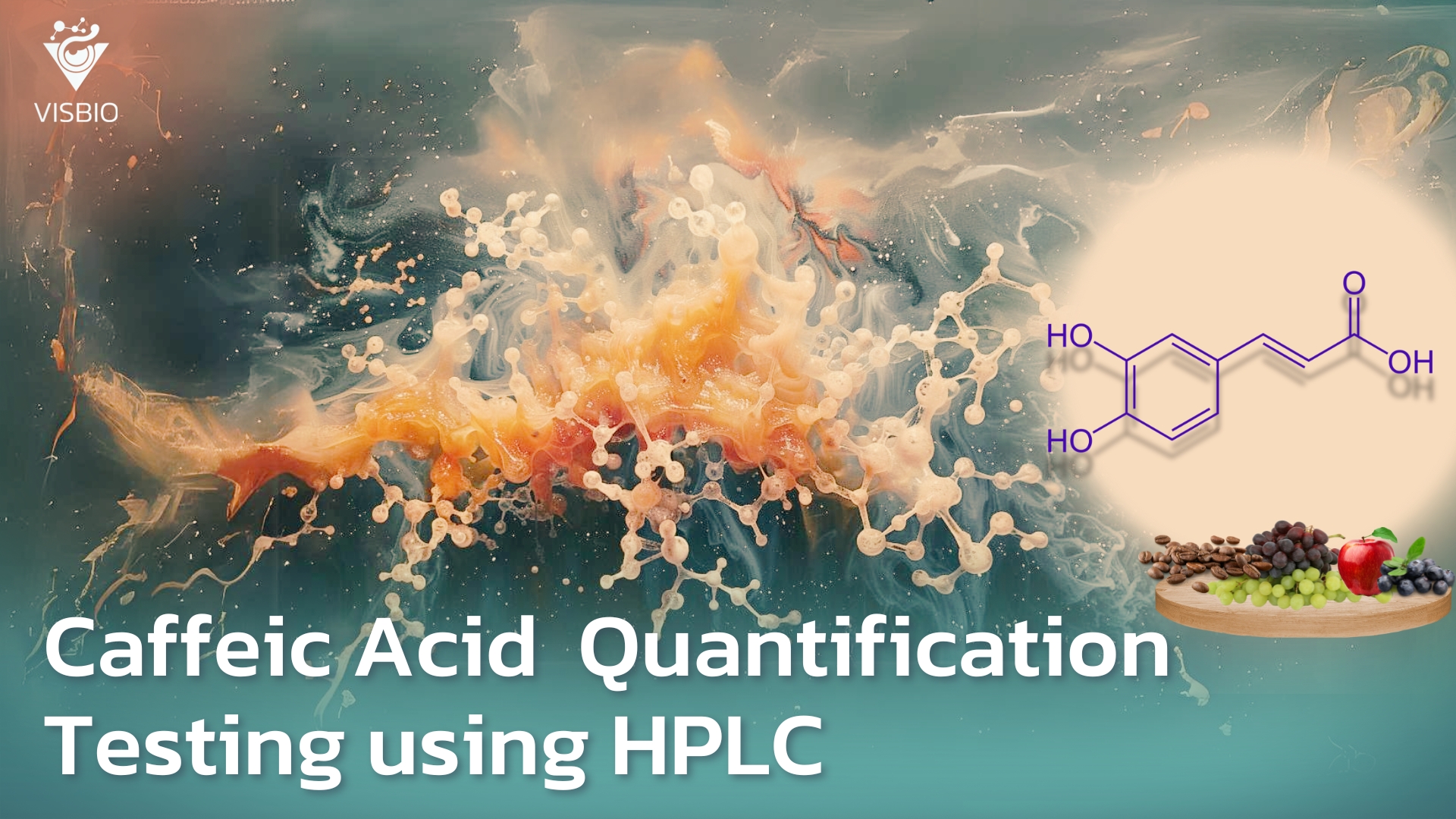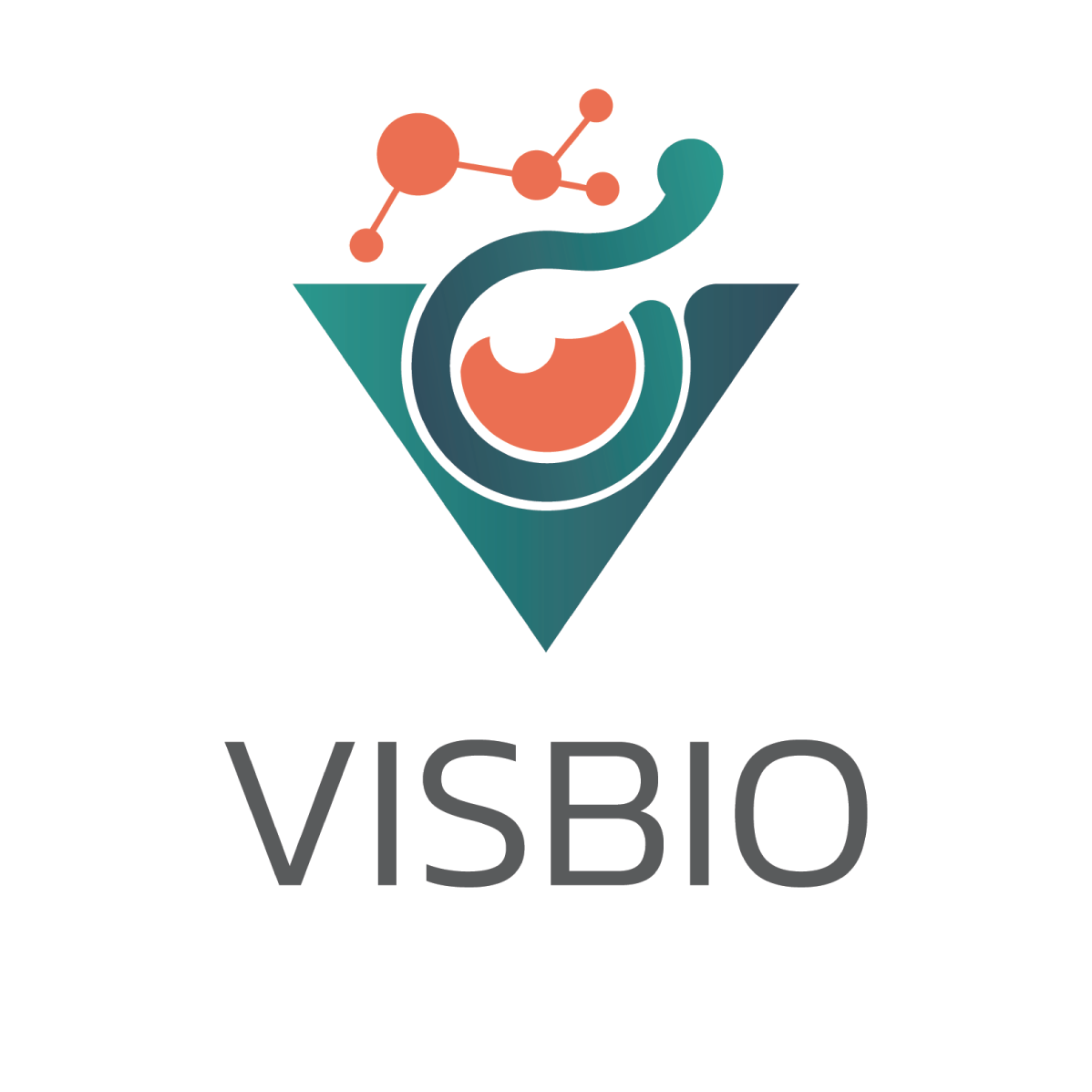
Information on Caffeic Acid Quantitative Testing Service Using HPLC Technique
Caffeic acid is a phenolic compound in the hydroxycinnamic acids group. It is found in various plants and possesses crucial biological properties, including antioxidant and anti-inflammatory effects, along with potential disease prevention capabilities. This makes caffeic acid widely applicable in the food, beverage, cosmetics, and pharmaceutical industries. However, controlling the amount of caffeic acid becomes extremely important to ensure product quality, safety, and consumer satisfaction. To ensure product quality, safety, and meet consumer needs for sustainable market competition VISBIO Co., Ltd., offer Caffeic Acid quantitative testing services for all products in the health and beauty, food and beverage, and pharmaceutical industries.
What is Caffeic Acid?
Caffeic acid is an organic compound classified as a polyphenol, a ubiquitous substance in plants. It plays a vital role in producing color, aroma, taste, and possesses diverse biological properties. Caffeic acid is naturally found in various plants such as coffee beans, grapes, apples, blueberries, and tea.
In plants, caffeic acid acts as an antioxidant, protecting plant cells from damage caused by factors like UV radiation, pollution, and chemicals. Moreover, caffeic acid is involved in plant growth and defense processes, including infection prevention and stress response.
The chemical structure of caffeic acid consists of a benzene ring attached to a hydroxyl group (-OH) and a carboxylic acid group (-COOH). The hydroxyl group contributes to caffeic acid’s good water solubility, while the carboxylic acid group makes it a weak acid.
Health Benefits of Caffeic Acid
Caffeic acid, a phenolic compound found in various plants like coffee, propolis, and wine, exhibits anti-inflammatory, antioxidant, and anti-cancer properties. It particularly inhibits the growth of hepatocarcinoma (HCC) liver cancer cells, a prevalent and aggressive cancer type. The primary mechanism of caffeic acid in combating cancer is reducing intracellular free radicals, which helps decrease DNA damage. Additionally, caffeic acid aids in reducing angiogenesis (blood vessel formation) in cancer cells, inhibiting tumor growth and spread.
Further studies have revealed that caffeic acid plays a crucial role in reducing oxidative stress in cells, a significant contributor to various chronic diseases, including cancer. Researchers view caffeic acid as a potential option for developing highly effective cancer drugs with fewer side effects compared to current treatments.
The multi-faceted capabilities of caffeic acid make it an intriguing candidate for clinical studies and the future development of anti-cancer agents with both preventive and therapeutic effects.
Caffeic Acid in the Cosmetics Industry
Caffeic acid, a natural extract rich in beneficial properties, plays a vital role in developing cosmetic products for skincare, as follows:
- Antioxidant Activity : Caffeic acid is a highly effective antioxidant that helps protect skin cells from damage caused by free radicals, unstable molecules with unpaired electrons. These tend to react with biological molecules like proteins, fats, and DNA, leading to cellular damage and deterioration. Free radicals are a significant factor accelerating skin aging, causing wrinkles, dark spots, and dullness. Caffeic acid can inhibit and reduce the dangers of free radicals, offering potential in delaying aging and reducing the risk of diseases such as cancer and heart disease.
- UV Protection : Ultraviolet (UV) radiation from sunlight is a major cause of photoaging, leading to premature skin aging, melasma, freckles, dark spots, and potentially skin cancer. Caffeic acid has UV absorption properties and reduces photoaging by decreasing the formation of reactive oxygen species (ROS), free radicals generated by UV radiation stimulation. Additionally, caffeic acid’s anti-inflammatory effects help reduce inflammation and irritation caused by UV exposure.
- Anti-microbial : Caffeic acid has the ability to inhibit the growth of various microorganisms, including bacteria, fungi, and viruses, particularly Propionibacterium acnes, a major cause of acne. The antimicrobial properties of caffeic acid are therefore beneficial in treating acne, reducing skin inflammation, and preventing infections.
Caffeic Acid: An Ingredient in Diverse Products
Caffeic acid, a natural compound with health and beauty benefits, is used as a key ingredient in developing various products, such as:
- Health drinks: Caffeic acid is found in various beverages like tea, coffee, and red wine, acting as an antioxidant, enhancing flavor and aroma. Moreover, caffeic acid is incorporated into health drinks like fruit juices and herbal beverages to increase nutritional value and promote health.
- Dietary supplements: With its antioxidant and anti-inflammatory properties, and its role in disease prevention, caffeic acid is used as an ingredient in dietary supplements to enhance health. Examples include skin nourishing supplements, antioxidant supplements, and brain-boosting supplements, with the belief that caffeic acid will improve their effectiveness.
- Cosmetics: Caffeic acid is popularly used in skincare products due to its antioxidant and anti-inflammatory properties, and its ability to reduce wrinkles. Caffeic acid is often found in skin creams, serums, and toners, with properties that help brighten the skin, diminish dark spots, and delay aging.
- Pharmaceuticals: Caffeic acid possesses pharmacological activities, including anti-inflammatory, anti-cancer, and anti-viral effects. It is therefore used in drug and pharmaceutical development to treat various diseases, such as skin diseases, cancer, and infectious diseases.
Caffeic Acid Quantitative Testing Service Using HPLC Technique
The HPLC (High Performance Liquid Chromatography) technique is a highly accurate method for separating compounds in a sample. It is suitable for analyzing the quantity of caffeic acid, a phenolic compound with antioxidant properties found in various plants like coffee, grapes, and apples.
Our Services
- Analysis of caffeic acid content in raw materials
- Inspecting the quality of raw materials before production to ensure the product contains the desired amount of caffeic acid.
- Aiding in the selection of high-quality raw materials to add value to the product.
- Suitable for manufacturers, distributors, and those who want to control raw material quality.
- Analysis of caffeic acid content in products
- Checking the amount of caffeic acid in finished products such as beverages, dietary supplements, and cosmetics.
- Controlling product quality and standards.
- Ensuring that the product contains the specified amount of caffeic acid.
- Suitable for manufacturers, entrepreneurs, and relevant agencies.
Literature:
- PubChem
- Kaushik, S. C., et al. (2019). Chemical and Pharmacological Aspects of C affeic Acid and Its Activity in Hepatocarcinoma. Retrieved from National Center for Biotechnology Information
- Boumerfeg et al. (2014) .C affeic Acid: A Review of Its Potential Use in Medications and Cosmetics, Analytical Methods 6(10):3203



